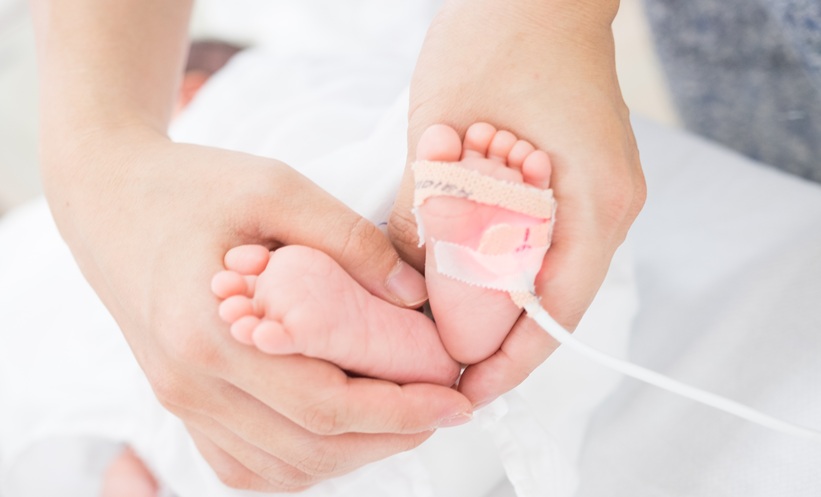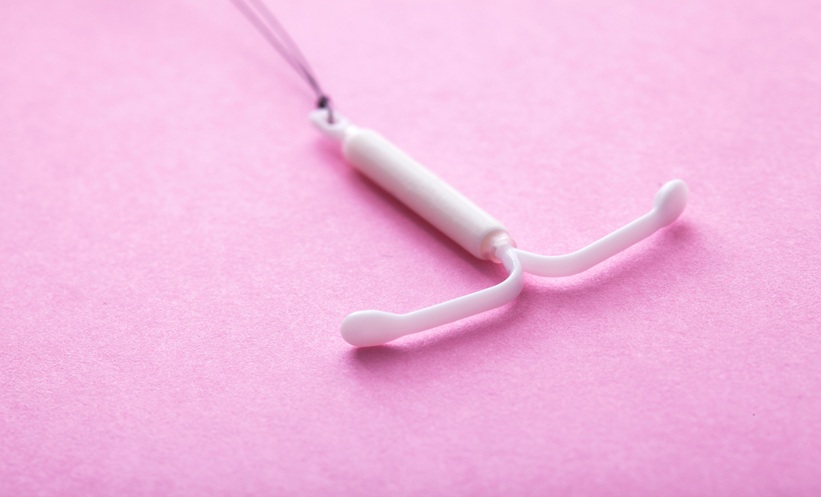Stephen Franks | Professor of Reproductive Endocrinology at Imperial College Faculty of Medicine; Consultant Endocrinologist at St Mary’s Hospital, Imperial College Healthcare NHS Trust, London, UK
Citation: EMJ Repro Health. 2023; DOI/10.33590/emjreprohealth/10304065. https://doi.org/10.33590/emjreprohealth/10304065
![]()
What led you to pursue a career in reproductive health? Was there a specific event or person that was particularly influential?
It was by accident really. I was very keen to have a career in internal medicine and did not really know what specialty to follow. I flirted with the idea of cardiology but that is a bit too exciting really. When I was looking for a training job in internal medicine, and not having a lot of success, my oldest friend from medical school said their brother, Howard Jacobs, was looking for somebody to do some research in endocrinology. He was doing this wonderful project on measuring prolactin in females with primary amenorrhea. We applied for a fellowship, which we got from the Royal College of Physicians. Although I had not really thought about doing lab research, I really enjoyed that. We set up an assay for prolactin, which in those days was not very easy. I carried on training and did a postdoc in Canada in reproductive endocrinology. When I came back, I continued my training in general endocrinology and research in reproductive endocrinology, which I still have an interest in. I then started a position as a senior lecturer of reproductive endocrinology, in the Department of Obstetrics and Gynaecology, in what was then St. Mary’s Hospital, London, UK, which has since become part of Imperial College. So, I got bitten by the bug of research and endocrinology, particularly reproductive endocrinology, and the rest is history.
You currently have more than 500 international publications to your name for your research in endocrinology and reproductive biology. What do you believe to be the current gaps in literature and which topics merit greater attention?
I think the big gaps are in female health, and there is still a lot to be learnt about the effect of the environment on reproduction and how obesity affects reproduction. We have lots of new information about neuroendocrinology of reproduction, but there is still more to learn there, such as how to manage menopausal symptoms.
Over the last 10 years what have been the most significant advances within the field of reproductive endocrinology?
We have learnt about the brain and reproduction, particularly neuropeptides, and there have been a lot of advances on these in the last 10 years. Kisspeptin for example, which is a neuropeptide in the hypothalamus, translates environmental signals and conveys them to the gonadotropin-releasing hormone (GNRH) neurons. Those do not have steroid receptors themselves, but kisspeptin neurones do. So, it is like a master controller of GNRH. In the last 10 years, a lot has been learnt about its physiology, as well as therapeutic implications. For example, whether you could give kisspeptin to females who have hypothalamic amenorrhea to get them to ovulate. The results look promising, although they are not defined yet. Waljit Dhillo’s group has looked at neurokinin B and its receptor, and discovered that if you block the neurokinin B receptor, you can stop menopausal flushes. This is an advance in the management of menopause, which is very significant. So, for females who cannot take oestrogen, it looks like an extremely promising treatment, and in fact I think it is now licensed for management. That is an example of how researching neuropeptides helps, and we have also learnt a lot more about what controls gonadotrophin secretion in polycystic ovary syndrome (PCOS).
Your recent research specifically focuses on PCOS. Are there any advances you are particularly excited by in this field?
Something I think has advanced considerably in the last 10 years, relating to PCOS, is genetics of reproductive endocrine disorders. For example, in hypothalamic amenorrhea, genes that are related to GNRH secretion have been identified. Even in females with functional hypothalamic amenorrhea, who are underweight or exercise a lot, and whose period is switched off, it seems that there can be a genetic predisposition to losing their periods as a result of impaired gonadotrophin secretion. In the field of PCOS, genetics have been very important and have led to some advances. What we have learnt about PCOS is how important it is in terms of long-term health and particularly mental health. It is a significant factor in terms of anxiety and depression, as well as quality of life issues, which are more likely in females who suffer from hirsutism and have to shave daily. But even in those who do not have such severe symptoms, it is a visible problem that we have learnt from population studies that I have been involved in over 20 years. We have been able to look at females born in 1966 and 1986 and followed them through until quite recently. This has given us a bit more insight into what impact infertility has in PCOS. We can also look at the impact of obesity over the years in females with PCOS. So, I think that has been a very important advance for us.
You are due to present on ‘The different phenotypes of PCOS: Implications for clinical practice’ at ESHRE 2023. How widespread do you believe the knowledge of PCOS is and are there any misconceptions?
The answer is the knowledge is not widespread enough. While there is more knowledge amongst general practitioners or even specialists such as gynaecologists and endocrinologists, there is not enough. I would still get patients referred to me who have had a scan because they had pelvic pain, found they had polycystic ovaries, and were told they will not be able to get pregnant and should think about adoption. The ignorance about the implications of polycystic ovaries is still there and while it is getting better, it is not good enough. There are initiatives around the globe to try and improve awareness, and I am involved with a patient support group called Verity, which tries to get proper information to outpatients. Rachel Hawkes, the chair of Verity, has been involved in developing the international guidelines for management of PCOS. So, that is a way of improving awareness amongst the public and therefore amongst GPs, at the same time encouraging patient empowerment.
In the recently published review you co-authored, entitled ‘Obesity and Polycystic Ovary Syndrome’. What was the key message you were trying to deliver?
What is interesting is that females with PCOS seem to be predisposed to obesity, but it is a vicious circle. If you get obese, your symptoms get worse, and if you lose weight, you get a lot better; however, that is not so easy to do. One of the things we are very interested in, is looking at the possibility of an energy balance in females with PCOS. This follows up on a paper we published 30 years ago, where we showed that energy expenditure after a meal, so postprandial energy expenditure, is reduced in females with polycystic ovaries; however, there was no difference in resting energy expenditure. I later worked with Colin Duncan, who wanted to try to determine if the defect in postprandial thermogenesis was androgen-dependent. He has a sheep model of PCOS, which equals a clinically credible model, because sheep do have all the features of PCOS, such as excess hair, as well as reproductive and metabolic features of PCOS, if they are exposed to androgen in late foetal life. We tried to determine whether these were androgenised sheep and whether they had this disorder of energy panels, and the answer is they do. Duncan went on to look at whether you could actually reverse that. He had this very smart idea of giving the animals intranasal insulin, because it is related to insulin insensitivity, and he was able to show that you could reverse the postprandial defect in these prenatally androgenised sheep. I am now a collaborator on a grant he got to see whether intranasal insulin in females improves energy expenditure.
You have chaired the Society for Endocrinology, you were president of the Section of Endocrinology and Diabetes of the Royal Society of Medicine (RSM), and hold an honorary doctorate from the University of Uppsala, Sweden. What achievement are you most proud of?
I suppose passing on a passion for reproductive endocrinology to people who have trained with me. There are lots of things that I feel quite proud of in terms of research, for example the idea that we might be following up on this disorder of energy balance. I think I was one of the first to suggest that a weight loss of a 5–10% made a big difference to resuming ovulation. I was also involved in the early studies looking at prevalence of polycystic ovaries in collaboration with Judith Adams in 1986. She could see polycystic ovaries on ultrasound, in days when it was not easy to do that. So, that made a difference because we could look at different patient groups, which revised the idea of how prevalent it was.
As an educator, where can we expect to see your focus lie in the field of reproductive health over the coming years?
I have been practising for a very long time, so I am thinking about winding down. I have already finished my clinical work and while I miss my patients, I do not regret having given up. So, my focus is on research at the moment. From a very personal point of view, I am looking at thecal cells in females with PCOS, because not a lot is known about them. For example, more knowledge is accumulating about where the thecal cells come from and what signals are involved. That is something we would like to pursue in collaboration with people in Cambridge and Copenhagen, where they have an ovarian cryopreservation programme. For females who are about to have cancer treatment, which is likely to make them infertile, they offer the possibility of removing one ovary. If the cancer treatment is not ablative, in terms of reproductive function, they have a functioning ovary. The other ovary is cut up and little pieces of cortex, which contain the primordial follicles and early growing follicles, are frozen. They can then be auto transplanted and there have now been one or two pregnancies. When they cut out the medullary tissue just below the cortex, it contains lots of follicles unsuitable for freezing, so we can get small ovarian follicles of different sizes, which we can get thecal cells from. That is our source and we are lucky to have that collaboration. So, I am looking forward to that; we put in a grant application and we will see.







